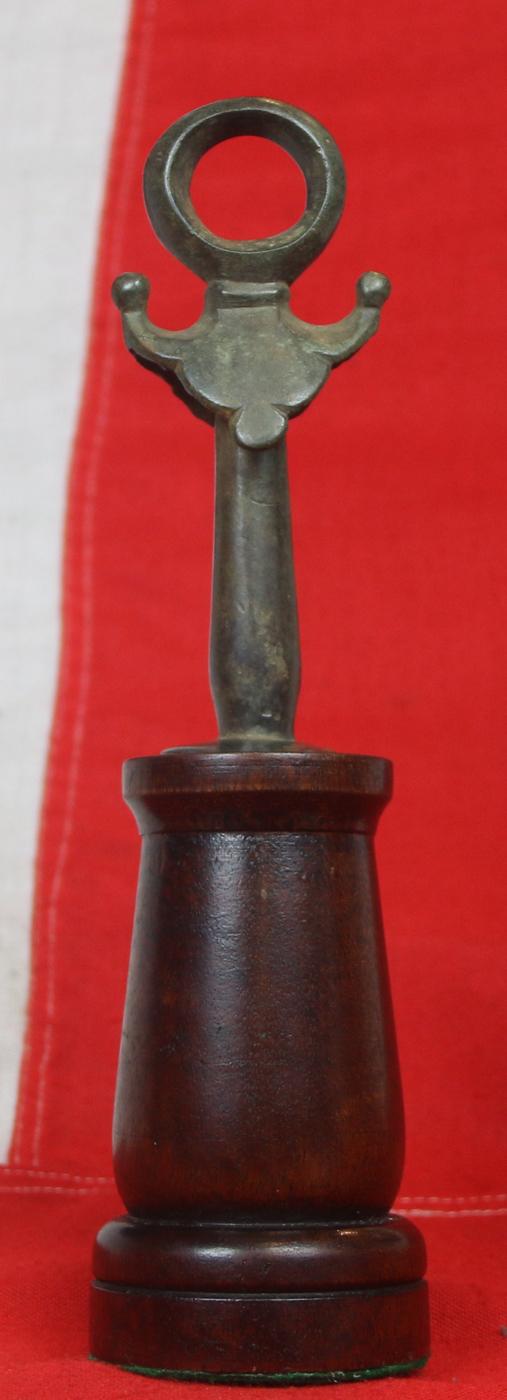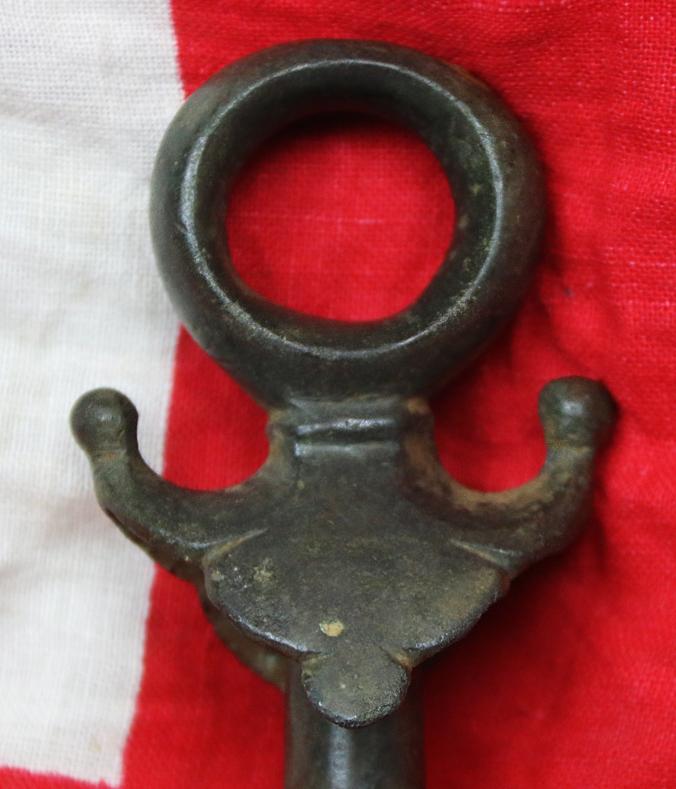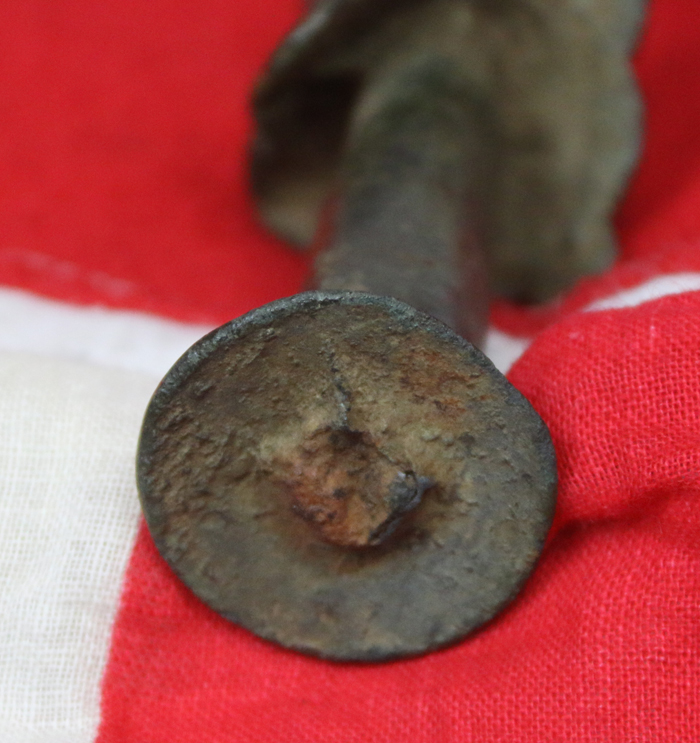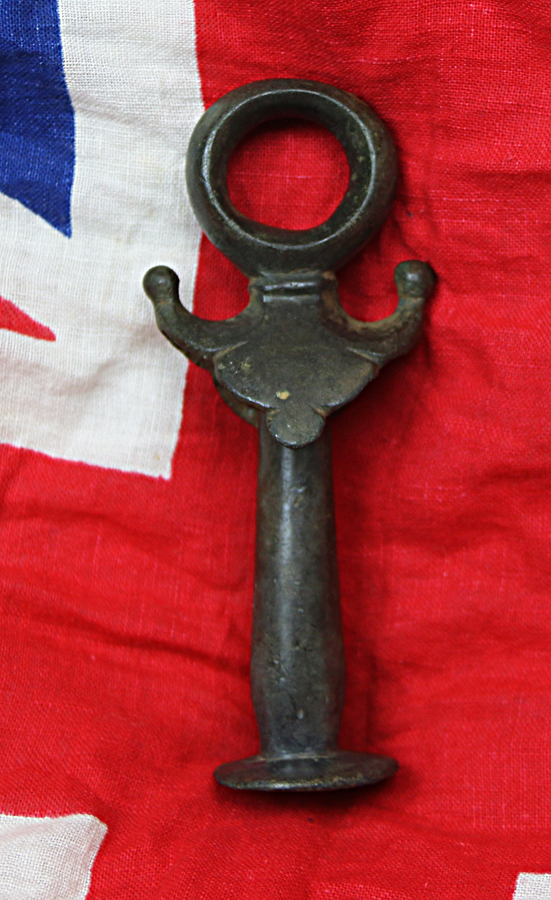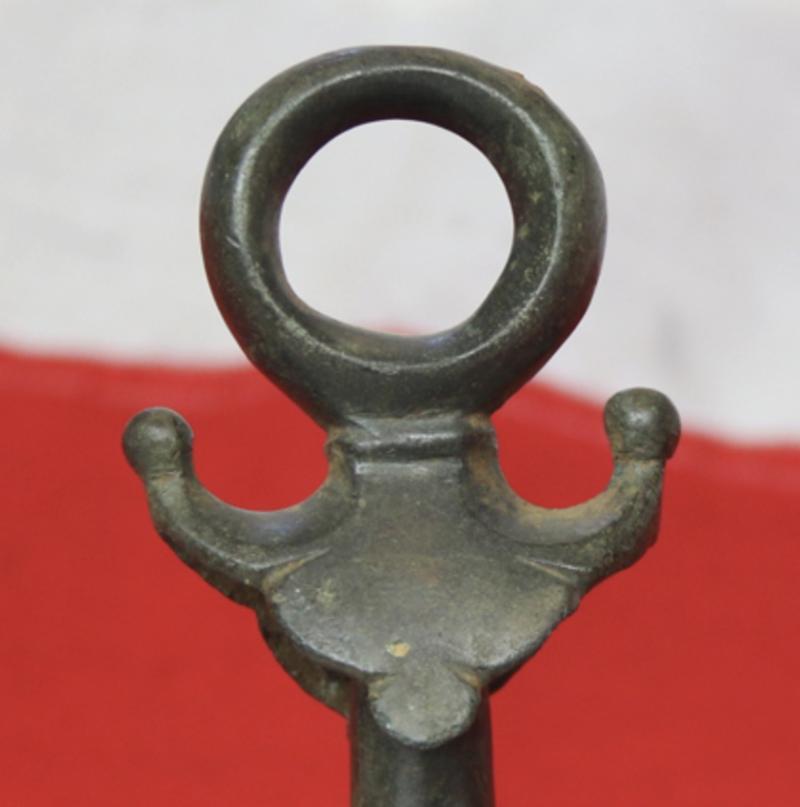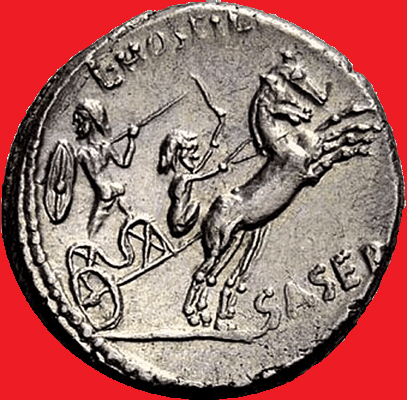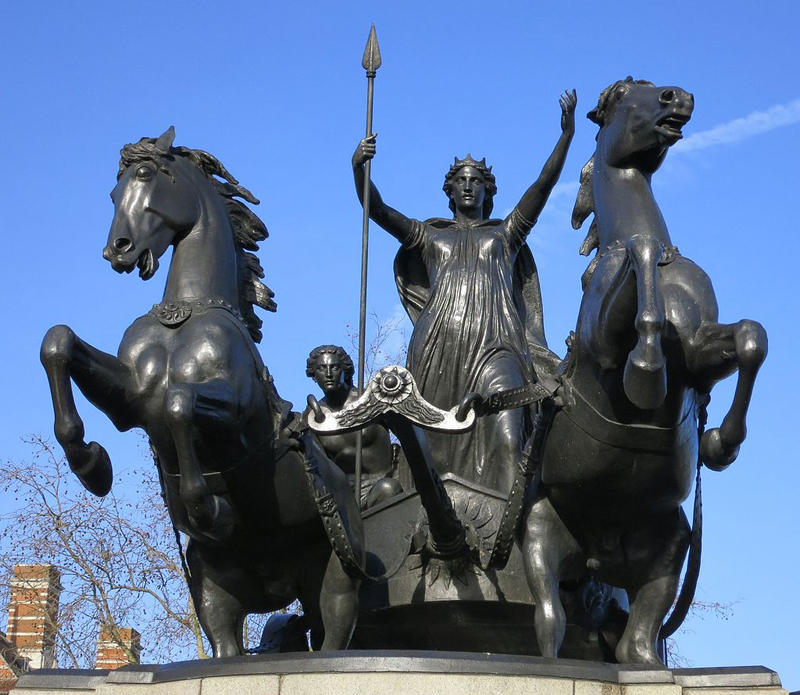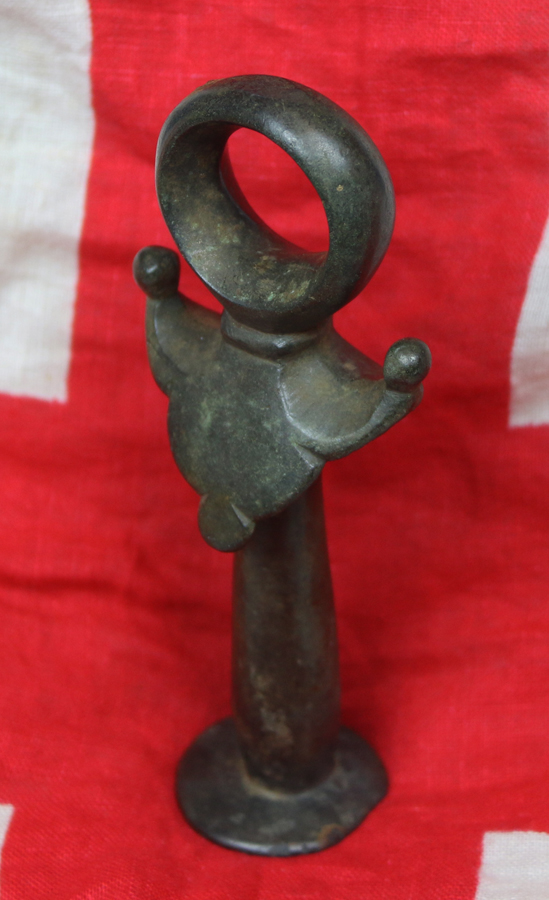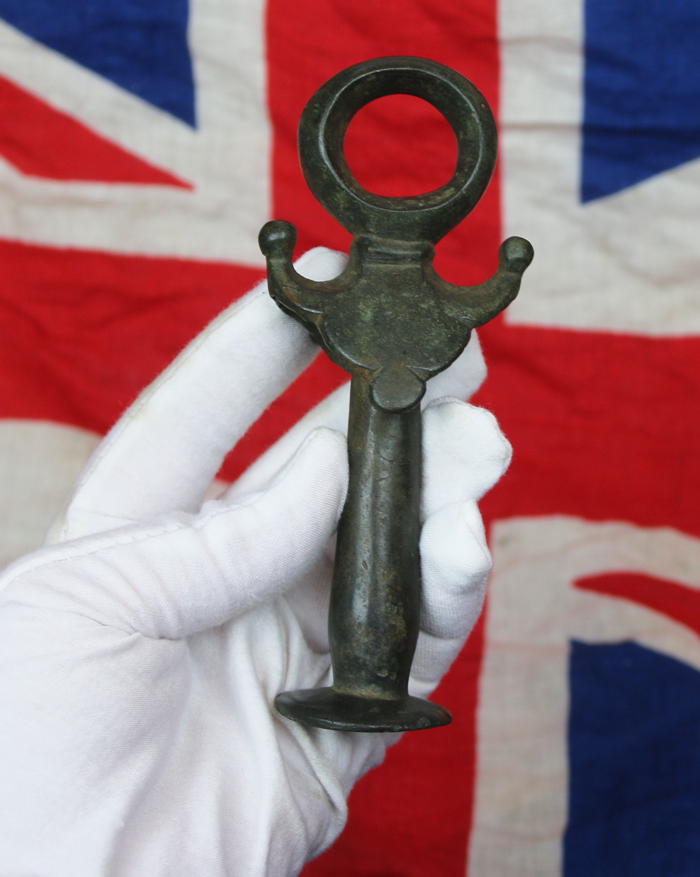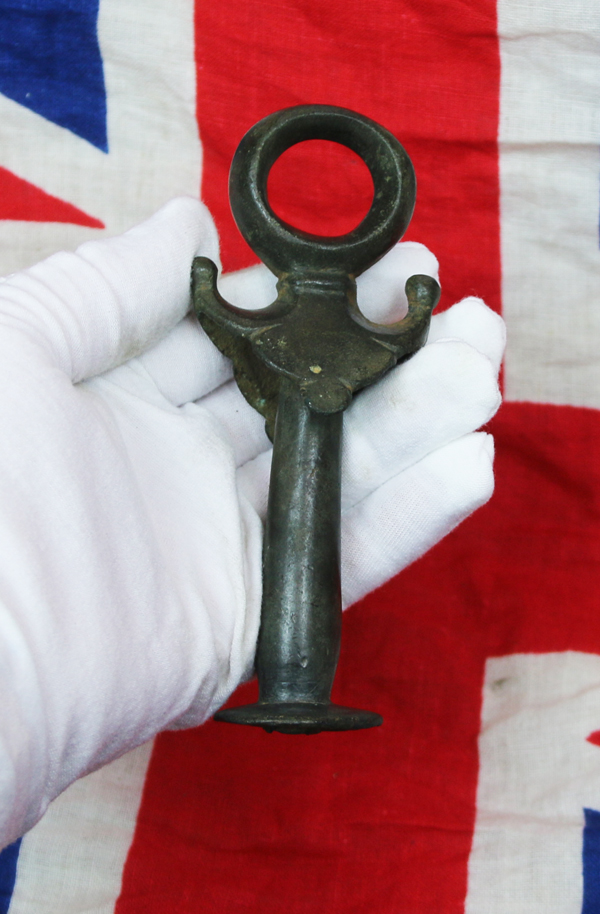A Stunning 2000 year old Ancient Briton, Original Celtic Chief's Bronze Chariot Mount, As Used By Queen Boadicea, Also Known As Boudicca Queen of the Iceni, of the Ancient Britons of A Chieftain That Perished at the Battle of Silchester, circa 60 ad
The polished mahoghany display stand has just arrived back from re-polishing, it was originally designed to replicate the top of the wooden chariot mount it would have originally been mounted upon. So the photographic images have been re taken to show it how it now looks complete.
Apparently excavated from a Chieftains Burial Site, Viables in Hampshire, England, in the 19th century. Just south of Silchester, now thought to be a battle site of Queen Boudicca. Thus it is possible this came from a chieftains burial of a chief of Boudicca that perished at Silchster.
Evidence found at the Roman site of Silchester could mean it was the site of one of Boudicca's battles.
Professor Michael Fulford said that 13 years of excavations at Calleva had revealed evidence of the first gridded Iron Age town in Britain.
The site also bears the scars of possible early Roman military occupation, and evidence of later, widespread burning and destruction.
This suggests the site could have been destroyed at the hands of Boudicca.
Queen Boudicca waged war against the Romans in Britain from 60 AD after the Romans decided to rule the Iceni directly and confiscated the property of the leading tribesmen.
Boudicca's warriors successfully defeated the Roman Ninth Legion and destroyed the capital of Roman Britain, then at Colchester. They went on to destroy London and Verulamium (St Albans).
Thousands were killed. Finally, Boudicca was defeated by a Roman army led by Paulinus. Many Britons were killed and Boudicca is thought to have poisoned herself to avoid capture.
The site of the battle, and of Boudicca's death, are unknown.
A reconstruction of the battles between the Iceni and the Romans
Iceni warriors may have laid waste to Silchester
Professor Fulford said that in excavations at Silchester they had found evidence of a major military occupation at Calleva (now called Silchester) in 40 AD, then destruction between 60 and 80 AD, including wells that were filled in at this time and burned buildings.
"The settlement is completely wiped out somewhere between 60 AD and 80 AD, and it starts
Not only an incredibly beautiful ancient work of art, it is a unique artefact of ancient Romano-British history, and a fabulous large statement piece for any fine collection. It looks amazing mounted on it's old mahogany bespoke display stand.
Queen Boudicea was also spelt Boudicca, or Boudica In the time of the Ancient Briton Celts revolt against the might of Rome. A wonderful original, cast bronze large terret rein holder, once a significant mount from an Ancient Briton Celt chieftain's war chariot. Early-Mid 1st century AD, the very time of Boudicca. A cast carinated pillared terret rein holder with lobed flanges and upturned knopped crescents, columnar shank and flange with ferrous remains to the underside. This would have been mounted on the haft of the war chariot. And in an excavation one of maybe only a half dozen bronze pieces of the chariot that could have survived the ravages of time. There is so few opportunities to own a wonderful piece from the time of Boudicca Queen of the Iceni of ancient Briton. There are no known surviving artefacts of hers, but to own a significant part of maybe one of her chieftain's chariots is wonderful. About the time of Claudius' triumph in AD 43 (a century after Caesar's expeditions), Pomponius Mela, the first Roman geographer, says of the Britons that
"they fight not only on horseback and on foot, but also in wagons and chariots bigis et curribus, and are armed after the manner of the Gauls. They call those chariots covines which are set with scythes round about the naves falcatis axibus" (De Chorographia, III.43; first translated by Arthur Golding in 1585 and modernized here). In AD 60 or 61, when the Roman governor Gaius Suetonius Paulinus was campaigning on the island of Mona (modern Anglesey) on the northwest coast of Wales, Boudica led the Iceni, the Trinovantes, and others in revolt. They destroyed Camulodunum (modern Colchester), earlier the capital of the Trinovantes but at that time a colonia, a settlement for discharged Roman soldiers and site of a temple to the former Emperor Claudius. Upon hearing of the revolt, Suetonius hurried to Londinium (modern London), the 20-year-old commercial settlement that was the rebels' next target. He lacked sufficient numbers to defend the settlement, and he evacuated and abandoned Londinium. Boudicca led a very large army of Iceni, Trinovantes, and others against a detachment of Legio IX Hispana, defeating them, and burning Londinium and Verulamium.
An estimated 70,000-80,000 Romans and British were then killed in the three cities by those following Boudicca, many by torture. Suetonius, meanwhile, regrouped his forces, possibly in the West Midlands; despite being heavily outnumbered, he decisively defeated the Britons. The crisis caused Nero to consider withdrawing all Roman forces from Britain, but Suetonius's victory over Boudicca confirmed Roman control of the province. Boudicca then either killed herself to avoid capture (according to Tacitus), or died of illness (according to Cassius Dio) Beginning around the 3rd century BC, Celts of the regions around the Marne and the Moselle Rivers began burying their chieftains in light, two-wheeled chariots with their sword, shield, spears, and drinking vessels. Similar chariot graves from this era are also found in the British coastal regions of Yorkshire. The evidence for the use of these vehicles is clear. A Roman coin from 110 BC dramatically depicts the naked Gallic warrior-king Bituitus of the Averni casting spears from his chariot. And documentary evidence of the chariot in combat on the European continent is left to us by the Roman poet Propertius. In describing the fighting between the forces of Republican Rome and 30,000 howling Celtic warriors in 222 BC, Propertius depicts the chieftain Viridomar ‘clothed in striped trousers’ hurling javelins from his chariot with deadly accuracy. In fact, many of the Latin words for chariot-carpentium, carrus, essendum have Gaulish roots.
The use of chariots in combat in Gaul apparently died out before Caesar’s campaign of the 50s BC, because Caesar makes no mention of them, though he did of Gallic cavalry, in his Gallic Wars. But chariots certainly remained in Britain though few have been found there into the Caesarian era and beyond, because they are included in the writings of Caesar, Tacitus, and in the old Irish epic the ‘Tain Bo Cuailnge’ (The Cattle Raid of Cooley) composed in part around the 2nd century AD. Evidence of early Celtic chariot use is gleaned primarily from the excavation of graves of noble warriors.The first Roman expedition to Britain was a reconnoitre of the island by Julius Caesar in 55 BC, purportedly to suppress the reinforcements being given the native tribes in Gaul. There, chariots no longer were being used, and the ambush of a legion caught in the open and surrounded by the cavalry and chariots of the Britons provides an excursus by Caesar on their tactics, so unfamiliar to the Romans.
"In chariot fighting the Britons begin by driving all over the field hurling javelins, and generally the terror inspired by the horses and the noise of the wheels are sufficient to throw their opponents' ranks into disorder. Then, after making their way between the squadrons of their own cavalry, they jump down from the chariot and engage on foot. In the meantime their charioteers retire a short distance from the battle and place the chariots in such a position that their masters, if hard pressed by numbers, have an easy means of retreat to their own lines. Thus they combine the mobility of cavalry with the staying power of infantry; and by daily training and practice they attain such proficiency that even on a steep incline they are able to control the horses at full gallop, and to check and turn them in a moment. They can run along the chariot pole, stand on the yoke, and get back into the chariot as quick as lightning" (Gallic War, IV.33). An example from Ingolstadt, Germany, in Megaw, R.& V. Celtic Art. From its Beginnings to the Book of Kells,
London, 1989, item 225. 316 grams, 13.5cm (5 1/4"). From the estate of the late Ms.J Simmonds, Hampshire reputed to have been excavated near Viables in Hampshire at the end of the 19th century, likely from a chieftain's burial. The denarius coin in the gallery, shown for reference purposes only and not included, was minted by the moneyer Lucius Hostilius Saserna in 48 BC, following Caesar's campaign in Gaul. The reverse depicts a naked Celtic warrior holding a spear and small shield, while a crouched figure drives the horses with a whip. The survival of Roman chariot's terrets are certainly to be found, due to the number made, over such a long period, but an original Ancient Briton bronze terret, used by the Celt chieftains and Queen Boudicca, especially of such a large and finest quality piece such as this, is a great rarity of Ancient Briton Celt history.
It is not permanently affixed to the mahogany display stand so it can be removed with ease.
Code: 23013

